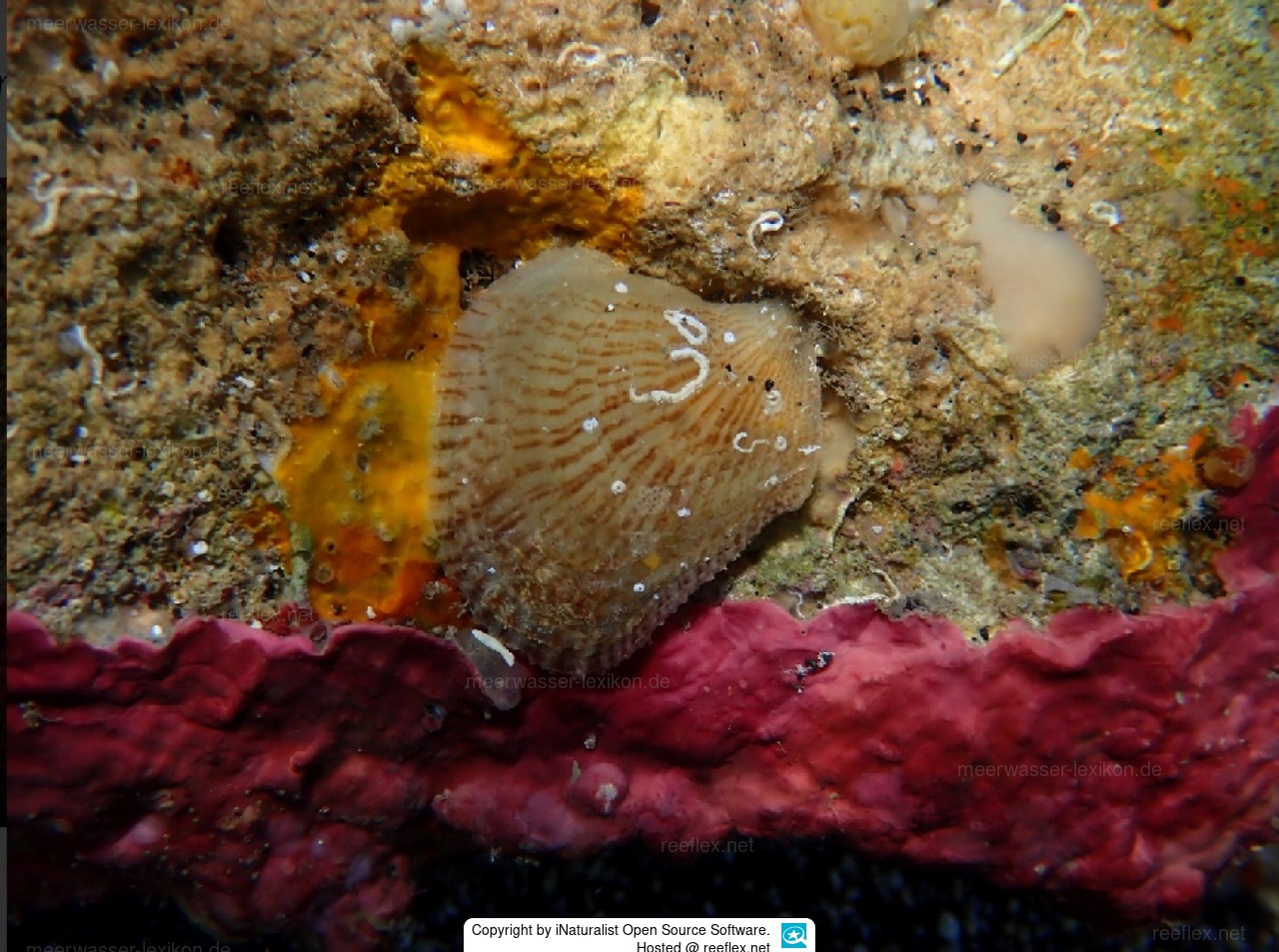Info
Isognomon perna is a marine mussel commonly found under rocks in shallow water, but it also occurs on reef slabs or on the underside of boulders, on sandy and gravelly bottoms.
Like the well-known Tridacna, Isognomon perna attaches itself to its substrate with the help of byssus threads.
The right valve has the byssus notch.
In photos of live mussels, it is often not possible to see that Isognomon perna has two unequal shells; the mussel is always attached to the substrate with its smaller side.
In suitable locations, the mussels sometimes occur in large clusters.
The mussel is light brown with radiating brown ribs, but the interior is light in color.
SeaLifeBase gives a maximum size of 7.5 cm, while Keoki Stender, Hawaii, gives 2 inches on his website Marinelife Photography, which is slightly more than 5 cm.
The mussel often provides small barnacles with a safe place to settle on the larger side of its shell, and the barnacles benefit from the stronger plankton inflow created by the mussel.
Synonyms:
Isognomon roberti H. J. Koch, 1953 · unaccepted
Isognomon sulcatum (Lamarck, 1819) · unaccepted
Isogonum marsupiale Röding, 1798 · unaccepted
Melina pernaeformis Philipsson, 1788 · unaccepted
Ostrea perna Linnaeus, 1767 · unaccepted
Perna costellata Conrad, 1837 · unaccepted
Perna eremita A. Gould, 1850 · unaccepted
Perna limoides Reeve, 1858 · unaccepted
Perna linnaei Dunker, 1869 · unaccepted > nomen nudum (attributed to Pfeiffer)
Perna marsupium Lamarck, 1819 · unaccepted
Perna samoensis Baird, 1873 · unaccepted
Perna sulcata Lamarck, 1819 · unaccepted
Like the well-known Tridacna, Isognomon perna attaches itself to its substrate with the help of byssus threads.
The right valve has the byssus notch.
In photos of live mussels, it is often not possible to see that Isognomon perna has two unequal shells; the mussel is always attached to the substrate with its smaller side.
In suitable locations, the mussels sometimes occur in large clusters.
The mussel is light brown with radiating brown ribs, but the interior is light in color.
SeaLifeBase gives a maximum size of 7.5 cm, while Keoki Stender, Hawaii, gives 2 inches on his website Marinelife Photography, which is slightly more than 5 cm.
The mussel often provides small barnacles with a safe place to settle on the larger side of its shell, and the barnacles benefit from the stronger plankton inflow created by the mussel.
Synonyms:
Isognomon roberti H. J. Koch, 1953 · unaccepted
Isognomon sulcatum (Lamarck, 1819) · unaccepted
Isogonum marsupiale Röding, 1798 · unaccepted
Melina pernaeformis Philipsson, 1788 · unaccepted
Ostrea perna Linnaeus, 1767 · unaccepted
Perna costellata Conrad, 1837 · unaccepted
Perna eremita A. Gould, 1850 · unaccepted
Perna limoides Reeve, 1858 · unaccepted
Perna linnaei Dunker, 1869 · unaccepted > nomen nudum (attributed to Pfeiffer)
Perna marsupium Lamarck, 1819 · unaccepted
Perna samoensis Baird, 1873 · unaccepted
Perna sulcata Lamarck, 1819 · unaccepted







 iNaturalist Open Source Software
iNaturalist Open Source Software



